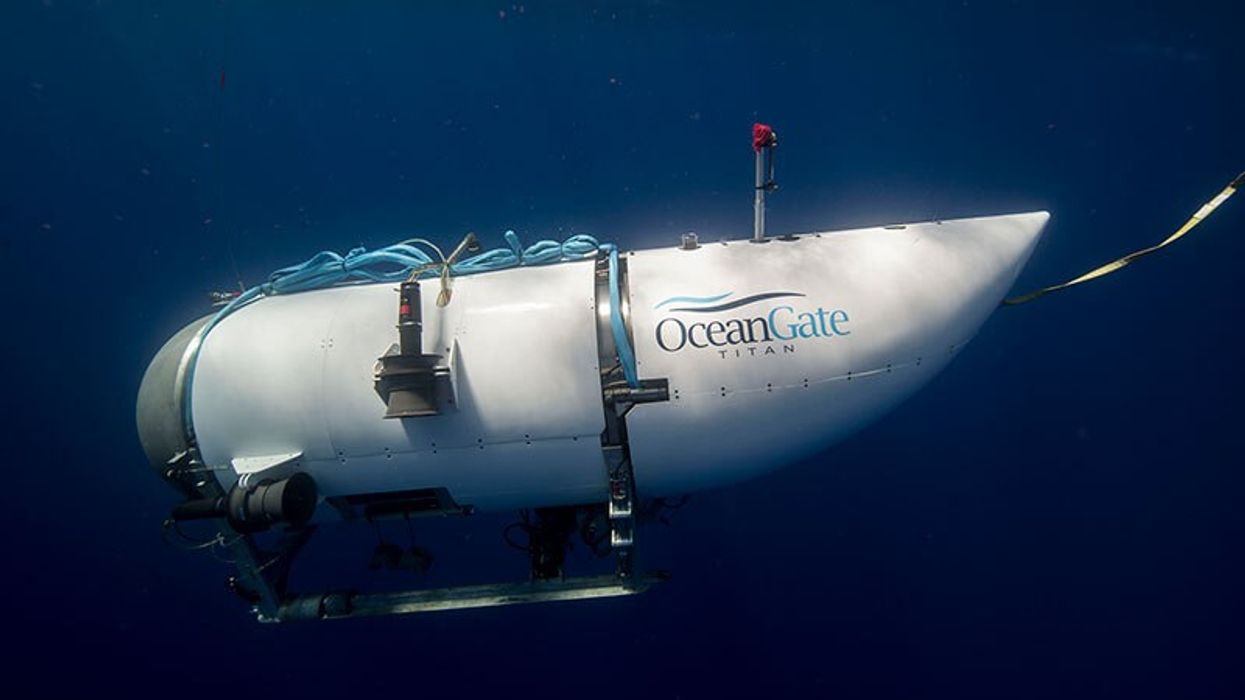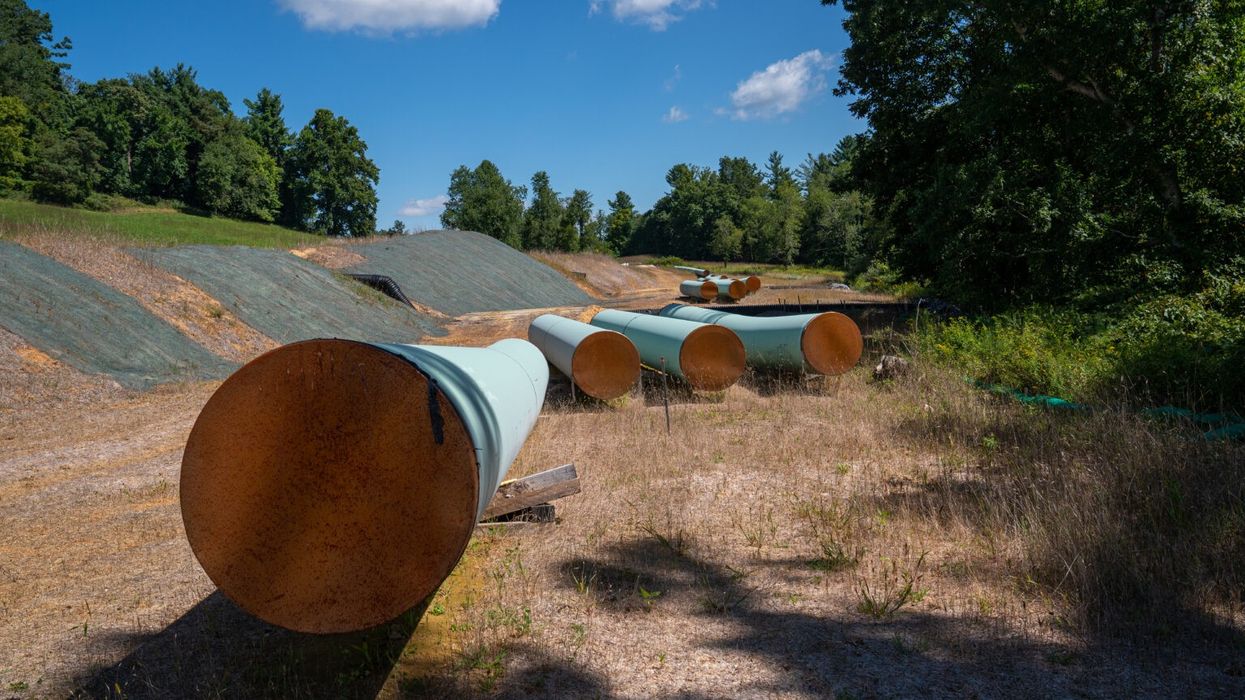The Adriana Shipwreck and the Costs of the Forever Wars
Framing many of the migrant’s deaths as in some sense war-related should force us to pay attention to ways in which fighting in or around their countries of origin might have impacted their fates.
Seeking news coverage about the Adriana, the boat crowded with some 700 people migrating to Europe to seek a better life that sank in mid-June off the coast of Greece, I googled “migrant ship” and got 483,000 search results in one second. Most of the people aboard the Adriana had drowned in the Mediterranean, among them about 100 children.
I did a similar search for the Titan submersible, which disappeared the same week in the North Atlantic. That kludged-together pseudo-submarine was taking four wealthy men and the 19-year-old son of one of them to view the ruins of the famed passenger ship, the Titanic. They all died when the Titan imploded shortly after it dove. That Google search came up with 79.3 million search results in less than half a second.
Guardian journalist Arwa Mahdawi wrote a powerful column about the different kinds of attention those two boats received. As she astutely pointed out, we in the anglophone world could hardly help but follow the story of the Oceangate submersible’s ill-fated journey. After all, it was the lead news story of the week everywhere and commanded the attention of three national militaries (to the tune of tens of millions of dollars) for at least five days.
Why do people care so much about rich men who paid $250,000 apiece to make what any skilled observer would have told them was a treacherous journey, but not hundreds of migrants determined to better their families’ lives, even if they had to risk life itself to reach European shores?
The Adriana was quite another story. As Mahdawi pointed out, the Greek Coast Guard seemed preoccupied with whether the migrants on that boat even “wanted” help, ignoring the fact that many of those aboard the small trawler were children trapped in the ship’s hull and that it was visibly in danger.
On the other hand, few, she pointed out, questioned whether the men in the submersible wanted help—even though its hull was ludicrously bolted shut from the outside prior to departure, making rescue especially unlikely. Glued to the coverage like many Americans, I certainly didn’t think they should be ignored, since every life matters.
But why do people care so much about rich men who paid $250,000 apiece to make what any skilled observer would have told them was a treacherous journey, but not hundreds of migrants determined to better their families’ lives, even if they had to risk life itself to reach European shores? Part of the answer, I suspect, lies in the very different reasons those two groups of travelers set out on their journeys and the kinds of things we value in a world long shaped by Western military power.
An American Preoccupation With the Military
I suspect that we Americans are easily drawn to whatever seems vaguely military in nature, even a “submersible” (rather than a submarine) whose rescue efforts marshaled the resources and expertise of so many U.S. and allied naval forces. We found it anything but boring to learn about U.S. Navy underwater rescue ships and how low you can drop before pressure is likely to capsize a boat. The submersible story, in fact, spun down so many military-style rabbit holes that it was easy to forget what even inspired it.
I’m a Navy spouse and my family, which includes my partner, our two young kids, and various pets, has been moving from one military installation to another over the past decade. In the various communities where we’ve lived, during gatherings with new friends and extended family, the overwhelming interest in my spouse’s career is obvious.
Typical questions have included: “What’s a submarine’s hull made out of?” “How deep can you go?” “What’s the plan if you sink?” “What kind of camo do you wear?” And an unforgettable (to me at least) comment from one of our kids: “That blue camo makes you guys look like blueberries. Do you really want to hide if you fall in the water? What if you need to be rescued?”
In our militarized culture, we seize on the cosmetic parts like the nature of submarines because they’re easier to talk about than the kind of suffering our military has actually caused across a remarkably wide stretch of the planet in this century.
Meanwhile, my career as a therapist for military and refugee communities and as a co-founder of Brown University’s Costs of War Project, which might offer a strange antiwar complement to my spouse’s world, seldom even makes it into the conversation.
Aside from the power and mystery our military evokes with its fancy equipment, I think many Americans love to express interest in it because it seems like the embodiment of civic virtue at a time when otherwise we can agree on ever less. In fact, after 20 years of America’s war on terror in response to the September 11, 2001, attacks on the Pentagon and the World Trade Center, references to our military are remarkably widespread (if you’re paying attention).
In our militarized culture, we seize on the cosmetic parts like the nature of submarines because they’re easier to talk about than the kind of suffering our military has actually caused across a remarkably wide stretch of the planet in this century. Most of us will take fancy toys like subs over exhausted servicemembers, bloodied civilians, and frightened, malnourished migrants all too often fleeing the damage of our war on terror.
Migration During Wartime
We live in an era marked by mass migration, which has increased over the past five decades. In fact, more people are now living in a country other than where they were born than at any other time in the last half-century.
Among the major reasons people leave their homes as migrants are certainly the search for education and job opportunities, but never forget those fleeing from armed conflict and political persecution. And of course, another deeply related and more significant reason is climate change and the ever more frequent and intense national disasters like flooding and drought that it causes or intensifies.
The migrants on the Adriana had left Afghanistan, Egypt, Libya, Palestine, and Pakistan for a variety of reasons. Some of the Pakistani men, for instance, were seeking jobs that would allow them to house and feed their desperate families. One Syrian teenager, who ended up drowning, had left the war-torn city of Kobani, hoping to someday enter medical school in Germany—a dream that was unlikely to be realized where he lived due to bombed-out schools and hospitals.
All in all, the Costs of War Project estimates that the war on terror has led to the displacement of at least 38 million people, many of whom fled for their lives as fighting consumed their worlds.
In my mind’s eye, however, a very specific shadow loomed over so many of their individual stories: America’s forever wars, the series of military operations that began with our 2001 invasion of Afghanistan (which ended up involving us in air strikes and other military activities in neighboring Pakistan as well) and the similarly disastrous invasion of Iraq in 2003. It would, in the end, metastasize into fighting, training foreign militaries, and intelligence operations in some 85 countries, including each of the countries the Adriana’s passengers hailed from. All in all, the Costs of War Project estimates that the war on terror has led to the displacement of at least 38 million people, many of whom fled for their lives as fighting consumed their worlds.
The route taken by the Adriana through the central Mediterranean Sea is a particularly common one for refugees fleeing armed conflict and its aftermath. It’s also the most deadly route in the world for migrants—and getting deadlier by the year. Before the Adriana went down, the number of fatalities during the first three months of 2023 had already reached its highest point in six years, at 441 people. And during the first half of this year alone, according to UNICEF, at least 289 children have drowned trying to reach Europe.
If there’s one thing I’ve learned—even if on a distinctly small scale—as a therapist in military and refugee communities, it’s this: A painful history almost invariably precedes anyone’s decision to embark on a journey as dangerous as those the migrants of that ill-fated ship undertook. Though I’m sure many on it would not have said that they were fleeing “war,” it’s hard to disentangle this country’s war on terror from the reasons so many of them made their journeys.
One Syrian father who drowned had been heading for Germany, hoping to help his three-year-old son, who had leukemia and needed a treatment unavailable in his devastated country, an area that the U.S. invasion of Iraq first threw into chaos and where war has now deprived millions of healthcare. Of course, it hardly need be noted that his death only ensures his family’s further impoverishment and his son’s possible death from cancer, not to mention what could happen if he and his mom were forced to make a similar journey to Europe to get care.
Pakistan’s War Story
As many as 350 migrants on the Adriana were from Pakistan where the U.S. had been funding and fighting a counterinsurgency war—via drones and air strikes—against Islamist militant groups since 2004. The war on terror has both directly and indirectly upended and destroyed many lives in Pakistan in this century. That includes tens of thousands of deaths from air strikes, but also the effects of a refugee influx from neighboring Afghanistan that stretched the country’s already limited resources, not to speak of the deterioration of its tourism industry and diminished international investments. All in all, Pakistan has lost more than $150 billion dollars over the past 20 years in that fashion while, for ordinary Pakistanis, the costs of living in an ever more devastated country have only increased. Not surprisingly, the number of jobs per capita decreased.
One young man on the migrant ship was traveling to Europe to seek a job so that he could support his extended family. He had sold 26 buffalo—his main source of income—to pay for the journey and was among the 104 people who were finally rescued by the Greek Coast Guard. After that rescue, he was forced to return to Libya where he had no clear plan for how to make it home. Unlike most of the other Pakistanis on the Adriana, he managed to escape with his life, but his is not necessarily a happy ending. As Zeeshan Usmani, Pakistani activist and founder of the antiwar website Pakistan Body Count, points out, “After you’ve sacrificed so much in search of a better life, you’d likely rather drown than return home. You’ve given all you have.”
Rest Stops in a Militarized World
We certainly learned much about the heady conversations between the Titan’s OceanGate CEO, his staff, and certain estranged colleagues before that submersible embarked on its ill-fated journey, and then about the dim lighting and primitive conditions inside the boat. Barely probed in media coverage of the Adriana, however, was what it was like for those migrants to make the trip itself.
What particularly caught my attention was the place from which they left on their journey to hell and back—Libya. After all, that country has quite a grim history to be the debarkation point for so many migrants. A U.S.-led invasion in 2011 toppled dictator Muammar Gaddafi, leaving the country’s remote beaches even less policed than they had been, while Libya itself was divided between two competing governments and a collection of affiliated militias.
In such a chaotic setting, as you might imagine, conditions for migrants transiting through Libya have only continued to deteriorate. Many are kept in warehouses by local authorities for weeks, even months, sometimes without basic needs like blankets and drinking water. Some are even sold into slavery to local residents, and those lucky enough to move on toward European shores have to deal with smugglers whose motives and practices, as the Adriana’s story reminds us, are anything but positive (and sometimes terrorizing).
Consider how you would feel if you’d been adrift at sea, hungry, thirsty, and fearful for your life, when men in another boat armed and wearing masks approached you, further rocking a boat that was already threatening to capsize.
Onward, to the sea itself: When, some 13 hours after the first migrants called for help, the Greek Coast Guard finally responded, it sent a single ship with a crew that included four armed and masked men. The Guard alleges that many of the migrants refused help, waving the men away. Whether or not this was the case, I can imagine their fears that the Greeks, if not smugglers, might at least be allied with them. They also might have feared that the Guard would set them and their children, however young, on rafts to continue drifting at sea, as had happened recently with other migrant ships approached by the Greeks.
If that sounds far-fetched to you, then consider how you would feel if you’d been adrift at sea, hungry, thirsty, and fearful for your life, when men in another boat armed and wearing masks approached you, further rocking a boat that was already threatening to capsize. My guess is: not good.
Uncounted War Deaths
It would be far-fetched to count people like the migrants on the Adriana as “war deaths.” But framing many of their deaths as in some sense war-related should force us to pay attention to ways in which fighting in or around their countries of origin might have impacted their fates. Paying attention to war’s costs would, however, force us Westerners to confront the blood on our hands, as we not only supported (or at least ignored) this country’s wars sufficiently to let them continue for so long, while also backing politicians in both the U.S. and Europe who did relatively little (or far worse) to address the refugee crises that emerged as a result.
To take language used by the Costs of War Project’s Stephanie Savell in her work on what the project calls “indirect war deaths,” migrants like the drowned Syrian teenager seeking an education in Europe could be considered “doubly uncounted” war deaths because they weren’t killed in battle and, as in his case and others like it, their bodies will not be recovered from the Mediterranean’s depths.
When we see stories like his, I think we should all go deeper in our questioning of just what happened, in part by retracing those migrants’ steps to where they began and trying to imagine why they left on such arduous, dangerous journeys. Start with war-gutted economies in countries where millions find slim hope of the kind of decent life that you or I are likely to take for granted, including having a job, a home, health care, and safety from armed violence.
I’ll bet that if you do ask more questions, those migrants will start to seem not just easier to relate to but like true adventurers on this planet—and not those billionaires who paid $250,000 apiece for what even I could have told you was an unlikely shot at making it to the ocean floor alive.


